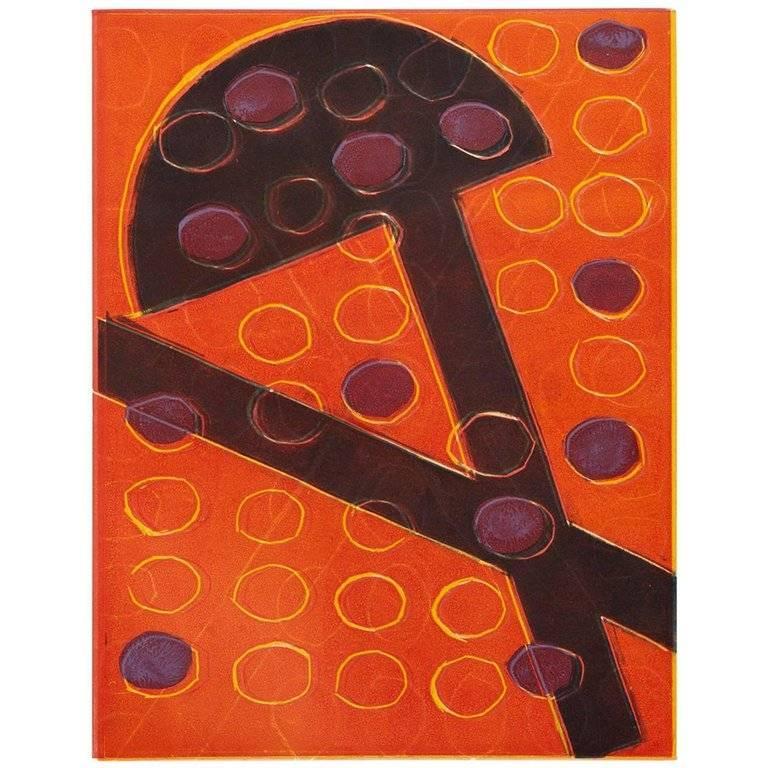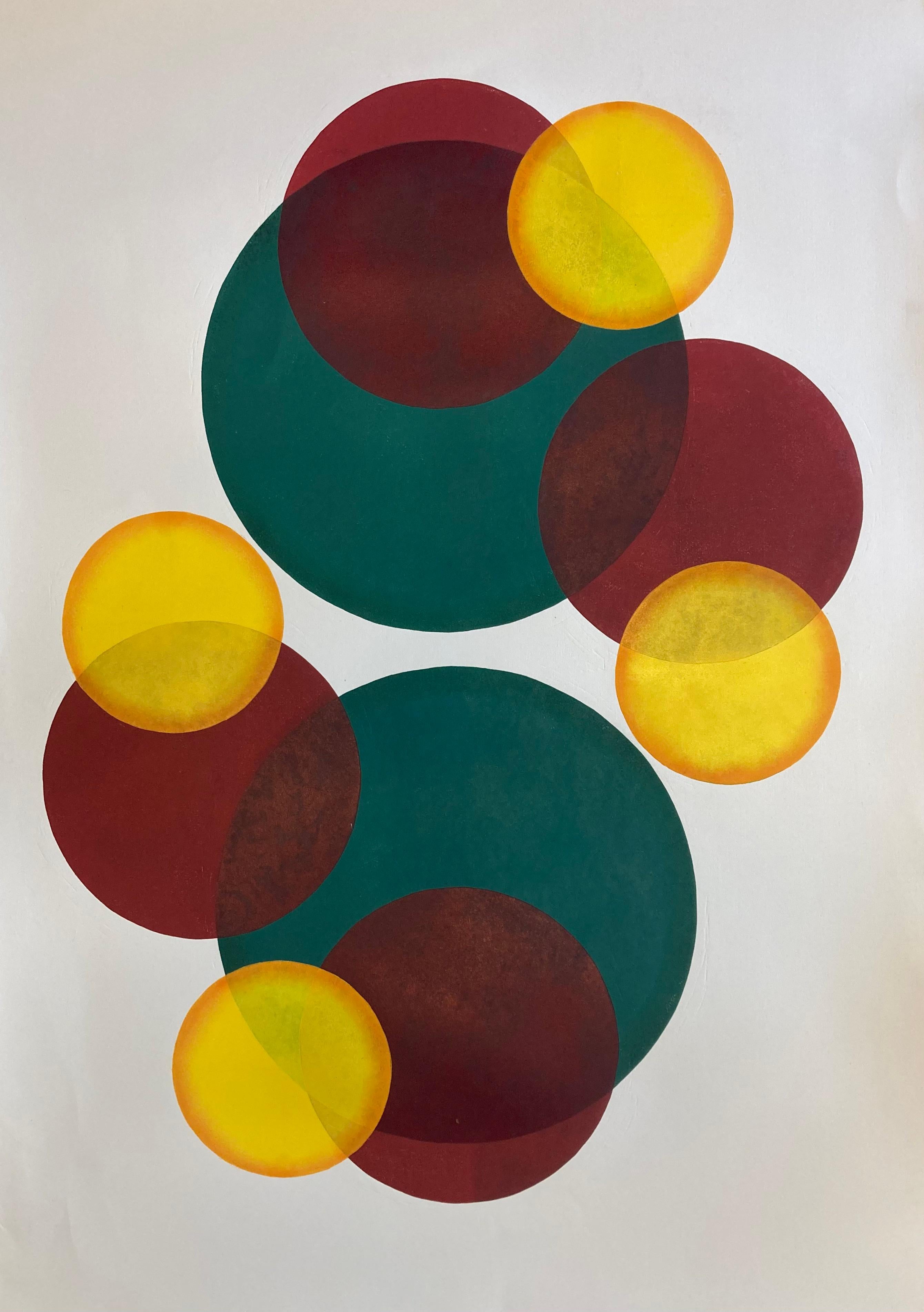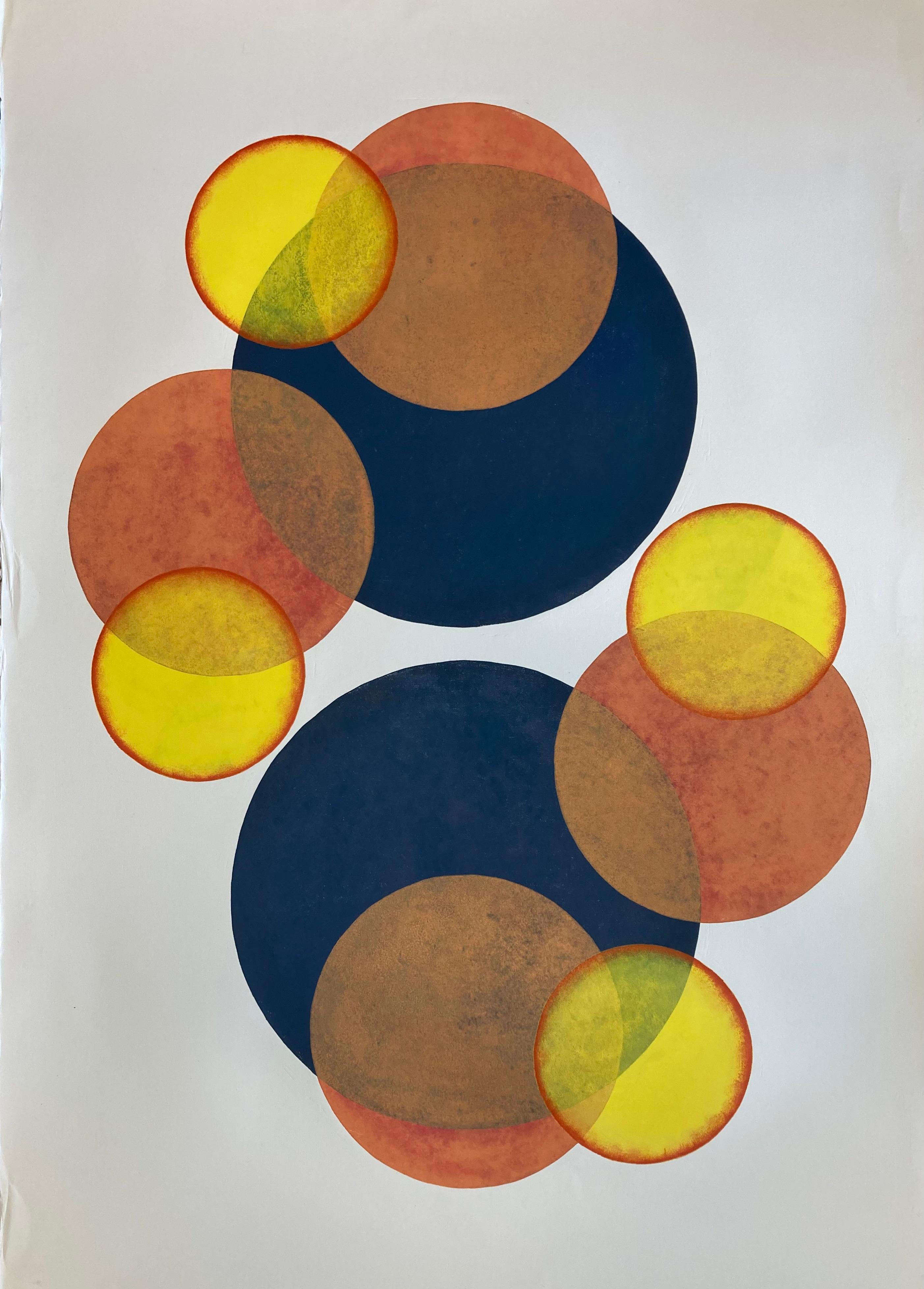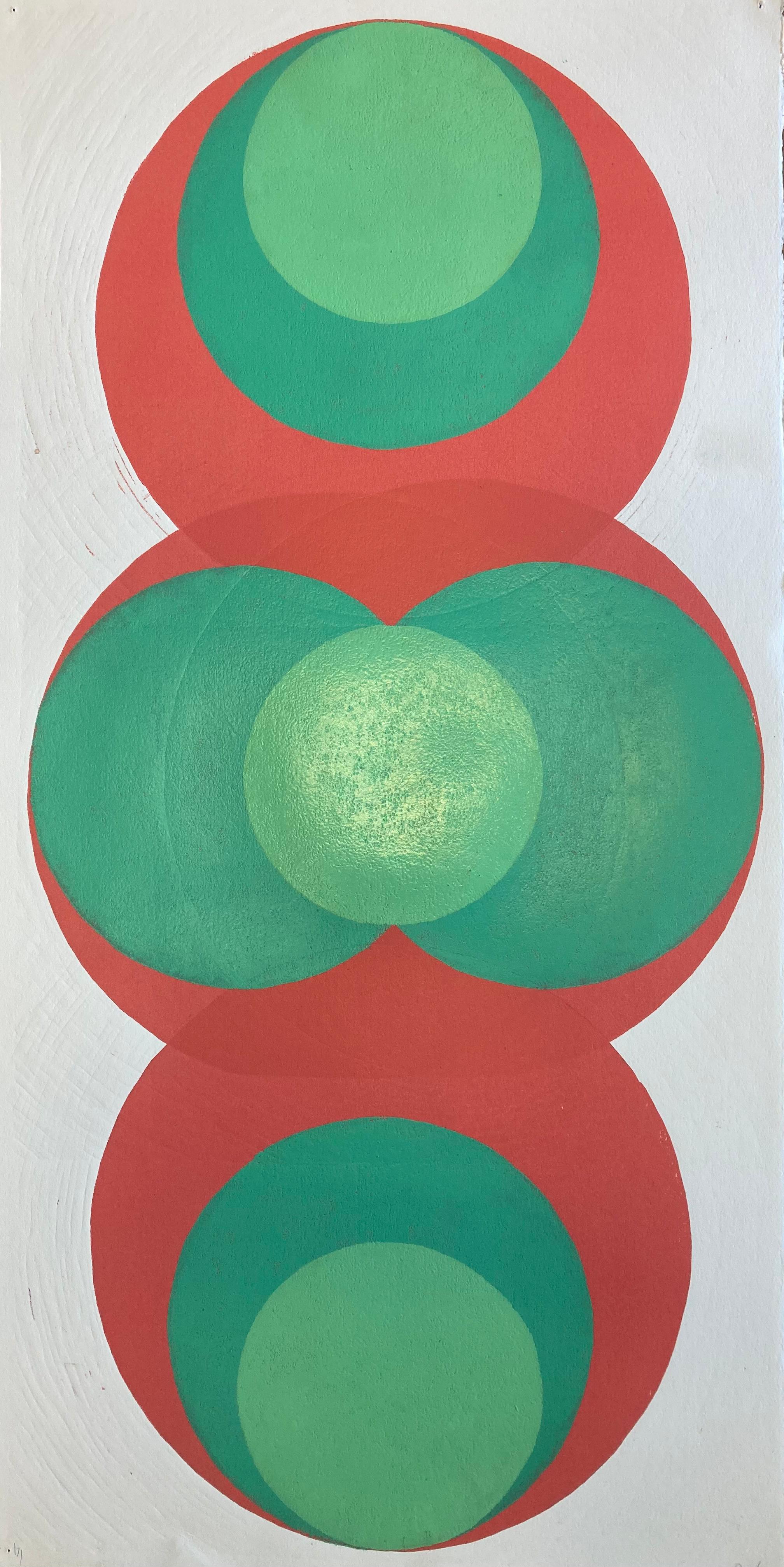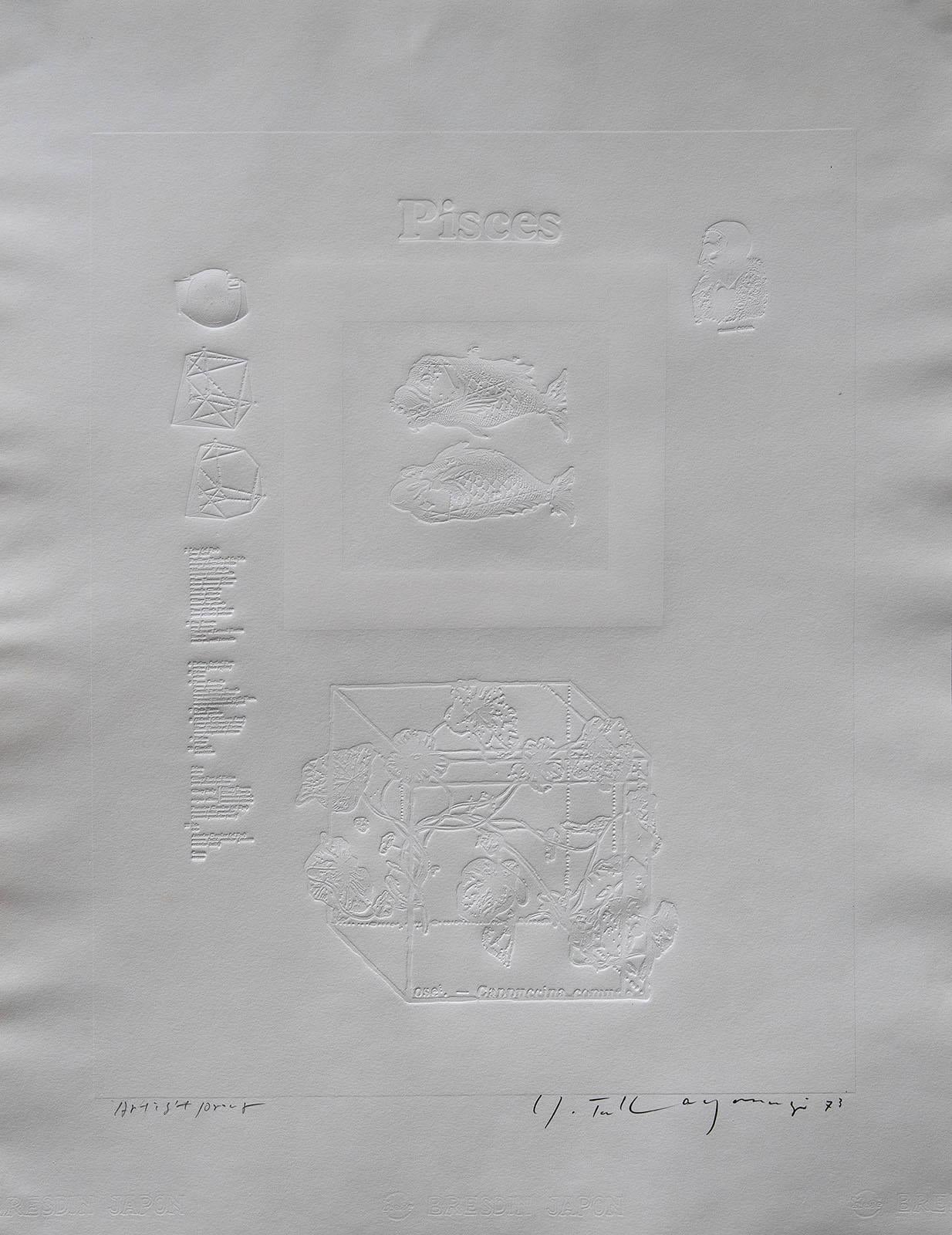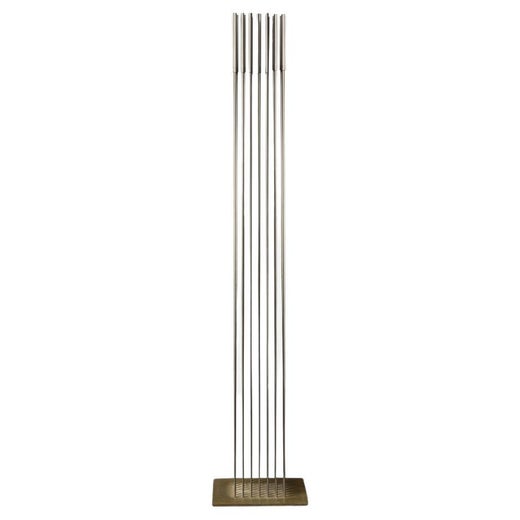Harry BertoiaThree Sound Sculpture
About the Item
- Creator:Harry Bertoia (1915 - 1978, American, Italian)
- Dimensions:Height: 36 in (91.44 cm)Width: 51 in (129.54 cm)Depth: 2 in (5.08 cm)
- More Editions & Sizes:Framed Size 32" x 47"Price: $8,700
- Medium:
- Movement & Style:
- Period:
- Condition:
- Gallery Location:Lambertville, NJ
- Reference Number:
Harry Bertoia
Sculptor, furniture and jewelry designer, graphic artist and metalsmith, Harry Bertoia was one of the great cross-disciplinarians of 20th-century art and design and a central figure in American mid-century modernism. Among furniture aficionados, Bertoia is known for his chairs such as the wire-lattice Diamond chair (and its variants such as the tall-backed Bird chair) designed for Knoll Inc. and first released in 1952.
As an artist, he is revered for a style that was his alone. Bertoia’s metal sculptures are by turns expressive and austere, powerful and subtle, intimate in scale and monumental. All embody a tension between the intricacy and precision of Bertoia’s forms and the raw strength of his materials: steel, brass, bronze and copper.
Fortune seemed to guide Bertoia’s artistic development. Born in northeastern Italy, Bertoia immigrated to the United States at age 15, joining an older brother in Detroit. He studied drawing and metalworking in the gifted student program at Cass Technical High School. Recognition led to awards that culminated, in 1937, in a teaching scholarship to attend the Cranbrook Academy of Art in suburban Bloomfield Hills, one of the great crucibles of modernism in America.
At Cranbrook, Bertoia made friendships — with architect Eero Saarinen, designers Charles and Ray Eames and Florence Schust Knoll and others — that shaped the course of his life. He taught metalworking at the school, and when materials rationing during World War II limited the availability of metals, Bertoia focused on jewelry design. He also experimented with monotype printmaking, and 19 of his earliest efforts were bought by the Guggenheim Museum.
In 1943, he left Cranbrook to work in California with the Eameses, helping them develop their now-famed plywood furniture. (Bertoia received scant credit.) Late in that decade, Florence and Hans Knoll persuaded him to move east and join Knoll Inc. His chairs became and remain perennial bestsellers. Royalties allowed Bertoia to devote himself full-time to metal sculpture, a medium he began to explore in earnest in 1947.
By the early 1950s Bertoia was receiving commissions for large-scale works from architects — the first came via Saarinen — as he refined his aesthetic vocabulary into two distinct skeins. One comprises his “sounding sculptures” — gongs and “Sonambient” groupings of rods that strike together and chime when touched by hand or by the wind. The other genre encompasses Bertoia’s naturalistic works: abstract sculptures that suggest bushes, flower petals, leaves, dandelions or sprays of grass.
As you will see on these pages, Harry Bertoia was truly unique; his art and designs manifest a wholly singular combination of delicacy and strength.
Find vintage Harry Bertoia sculptures, armchairs, benches and other furniture and art on 1stDibs.
- ShippingRetrieving quote...Ships From: Lambertville, NJ
- Return PolicyThis item cannot be returned.
- Vertial SculptureBy Harry BertoiaLocated in Lambertville, NJJim’s of Lambertville is proud to offer this artwork by: Harry Bertoia (1915 – 1978) Artist, sound art sculptor, and furniture designer, Harry Bertoia, was born in Italy in 1915 be...Category
20th Century Abstract Abstract Prints
MaterialsPaper, Monoprint
- "Flowers and Fruit"By Mercedes MatterLocated in Lambertville, NJJim’s of Lambertville is proud to offer this artwork by: Mercedes Matter (1913 - 2001) Best known as a painter of abstract still life and founder of the New York Studio School, M...Category
20th Century Abstract Abstract Paintings
MaterialsCanvas, Oil
- Untitled (First Theme)By Burgoyne DillerLocated in Lambertville, NJJim’s of Lambertville is proud to offer this artwork by: Burgoyne Diller (1906-1965) Recognized as the first American painter to embrace the tenets of Neo-Plasticism, Burgoyne Dill...Category
1960s Abstract Abstract Drawings and Watercolors
MaterialsPaper, Crayon, Pencil
- "Manhattan Night Life"By Vaclav VytlacilLocated in Lambertville, NJJim’s of Lambertville is proud to offer this artwork by: Vaclav Vytlacil (1892-1984) He was born to Czechoslovakian parents in 1892 in New York City. Living in Chicago as a youth, he took classes at the School of the Art Institute of Chicago, returning to New York when he was 20. From 1913 to 1916, he enjoyed a scholarship from the Art Students League, and worked with John C. Johansen (a portraitist whose expressive style resembled that of John Singer Sargent), and Anders Zorn. He accepted a teaching position at the Minneapolis School of Art in 1916, remaining there until 1921. This enabled him to travel to Europe to study Cézanne’s paintings and works of the Old Masters. He traveled to Paris, Prague, Dresden, Berlin, and Munich seeking the works of Titian, Cranach, Rembrandt, Veronese, and Holbein, which gave him new perspective. Vytlacil studied at the Royal Academy of Art in Munich, settling there in 1921. Fellow students were Ernest Thurn and Worth Ryder, who introduced him to famous abstractionist Hans Hofmann. He worked with Hofmann from about 1922 to 1926, as a student and teaching assistant. During the summer of 1928, after returning to the United States, Vytlacil gave lectures at the University of California, Berkeley, on modern European art. Soon thereafter, he became a member of the Art Students League faculty. After one year, he returned to Europe and successfully persuaded Hofmann to teach at the League as well. He spent about six years in Europe, studying the works of Matisse, Picasso, and Dufy. In 1935, he returned to New York and became a co-founder of the American Abstract Artists group in 1936. He later had teaching posts at Queens College in New York; the College of Arts and Crafts in Oakland, California; Black Mountain College in North Carolina; and the Art Students League. His paintings exhibit a clear inclination toward modernism. His still lives and interiors from the 1920s indicate an understanding of the art of Cézanne. In the 1930s, his works displayed two very different kinds of art at the same time. His cityscapes and landscapes combine Cubist-inspired spatial concerns with an expressionistic approach to line and color. Vytlacil also used old wood, metal, cork, and string in constructions, influenced by his friend and former student, Rupert Turnbull. He eventually ceased creating constructions as he considered them too limiting. The spatial challenges of painting were still his preference. During the 1940s and 1950s, his works indicated a sense of spontaneity not felt in his earlier work. He married Elizabeth Foster in Florence, Italy, in 1927 and they lived and worked in Positano, Italy for extended periods of time. Later on, they divided their time between homes in Sparkill, New York and Chilmark, Massachusetts, where Vyt, as he was affectionately called, taught at the Martha's Vineyard Art...Category
1930s Abstract Expressionist Abstract Paintings
MaterialsCanvas, Oil
- "Saturday Shoppers, Provincetown"By Nancy Maybin FergusonLocated in Lambertville, NJSigned lower left. Complemented by a hand carved and gilt frame. Nancy Maybin Ferguson (1872 - 1967) A native Philadelphia, Nancy Ferguson wa...Category
1910s Abstract Impressionist Figurative Paintings
MaterialsOil, Canvas
- "Cedar Hill"By George William SotterLocated in Lambertville, NJJim’s of Lambertville is proud to offer this artwork. Signed lower right. Original Period Newcomb Macklin Frame George William Sotter (1879 - 1953) Born in Pittsburgh on September 25, 1879, Sotter began his art education with local teachers and with Henry G. Keller, who had studied in various German academies. Keller, known for his superb, atmospheric watercolors, taught at the Cleveland School of Art but Sotter studied with him in Pittsburgh. Later Sotter would exhibit between 1903 and 1937 at the Pennsylvania Academy of the Fine Arts. His works were also shown at the Corcoran Gallery (1912-23), the Carnegie International (1901-26), the National Academy of Design (1913 and 1921), and at the Art Institute of Chicago (1911-27). In 1915, Sotter exhibited four works at the Panama-Pacific International Exposition in San Francisco, where he won a silver medal. Sotter was known mainly as a stained-glass artist; his work may be seen from New York City to Salt Lake City. Around a dozen craftsmen worked under him for these commissions. Sotter spent the summer of 1902 with Pennsylvania impressionist Edward Redfield in Boothbay Harbor, Maine. Between 1910 and 1919, Sotter taught at the Carnegie Institute of Technology. His paintings often feature large areas of sky filled with clouds and he frequently painted winter night scenes, such as Moonlight, Bucks County (Beacon Hill Fine Art), a perfectly successful depiction of a quiet, moonlit landscape filled with twinkling stars. Star-studded skies, although rare in landscape painting, go back at least to 1600 when they appear in the oeuvre of Adam Elsheimer...Category
20th Century Abstract Impressionist Paintings
MaterialsCanvas, Oil
- Black X with Blue CirclesBy Wyona DiskinLocated in Aramits, Nouvelle-AquitaineWyona Diskin, American (1915 - 1991) One Black Stick Bright Blue Balls Monoprint, signed with pencil in the lower left. Unframed. Wyona Diskin's abstract monoprints juxtapose strong...Category
1980s Abstract Geometric Abstract Prints
MaterialsMonoprint
- Separation IILocated in Crested Butte, COWhen Many Becomes One is a series of new work exploring form and the relationship between the individual and collective. Paulo Wellman has employed vari...Category
21st Century and Contemporary Abstract Geometric Abstract Prints
MaterialsMonoprint
- MotherLocated in Crested Butte, COWhen Many Becomes One is a series of new work exploring form and the relationship between the individual and collective. Paulo Wellman has employed vari...Category
21st Century and Contemporary Abstract Geometric Abstract Prints
MaterialsMonoprint
- Separation ILocated in Crested Butte, COWhen Many Becomes One is a series of new work exploring form and the relationship between the individual and collective. Paulo Wellman has employed vari...Category
21st Century and Contemporary Abstract Geometric Abstract Prints
MaterialsMonoprint
- UntitledLocated in Llanbrynmair, GB’Pisces’ Please note. This is not a mono print but 1st Dibs have option for Relief print. Which is what this is... By Yutaka Takayanagi. Medium - Relief print Edition - AP Signed - Yes Size - 510mm x 660mm Date - 1973 Condition - Excellent. 10 out of 10. Born in Tokyo in 1941, Takayanagi's artistic journey began when he enrolled at Tokyo University of the Arts in 1960, studying under the renowned oil painter Kaoru Yamaguchi. His talent was quickly recognized when he received an Honorable Mention at the 8th Shell Arts Award Exhibition in the same year. During his time at university, Takayanagi took an intensive course in copper plate printing under Tetsuro Komai, receiving his degree from the graduate school in 1966. Fascinated by the simultaneous color print method, he started creating copperplate prints and soon gained recognition for his unique metallic reliefs, which he produced using collages of English newspapers. Takayanagi's passion for experimentation led him to create metallic emboss reliefs using his own photographs, and in the latter half of the 1980s, he moved on to silkscreen prints. He continued to push the boundaries of his art, constantly exploring new techniques and mediums. In 1978 and the following year, Takayanagi was appointed as an arts researcher for the Ministry of Culture and traveled to the United States, France, and the UK. These experiences enriched his artistic perspective and further cemented his reputation as a highly regarded artist. Takayanagi was part of the influential printmaking group Sosaku Hanga, which emerged in the early 20th century in Japan. This movement emphasized the artist's involvement in every stage of the printmaking process, from designing the image to carving and printing the blocks. Takayanagi's work often incorporates elements of nature and landscape, with an emphasis on texture and pattern. He also experimented with collage, incorporating found materials like newspaper clippings and photographs into his prints. Takayanagi's work has been exhibited extensively in Japan and internationally, including at the Museum of Modern Art in New York and the National Museum of Modern Art in Tokyo. He has also received numerous awards for his contributions to printmaking, including the Japan Print Association Award and the Purple Ribbon Medal...Category
1970s Abstract Abstract Prints
MaterialsMonoprint
- Two Columns by Michael Hurson framed abstract with greco roman pillars on stageBy Michael HursonLocated in New York, NYIn this unique Michael Hurson monotype, stylized Greco-Roman pillars flank a plane of crosshatched and dotted texture in black, brown, and purple ink. The...Category
1980s Abstract Figurative Prints
MaterialsMonoprint, Monotype
